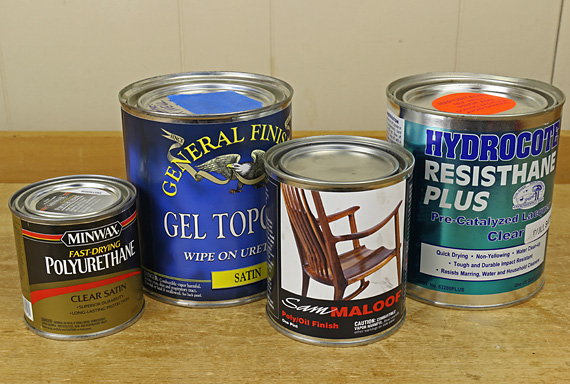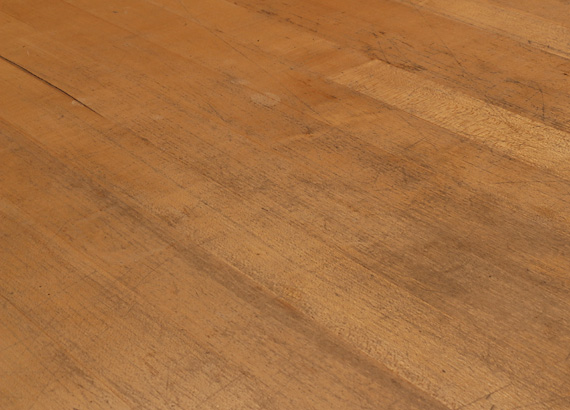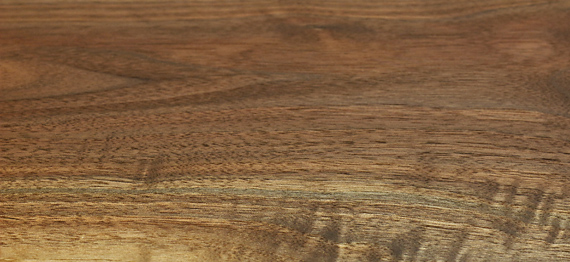
Good job! You developed a compelling design, skillfully employed sound construction techniques, and lavished care on your baby – I mean woodworking project. And of course, you applied a finish that made her look fabulous when she – uh, it – left the shop.
Well, it’s not over because it’s a jungle out there. Consider especially that pretty finish in which you sent your furniture/accessory oeuvre out into the world.
Think about the likely use and possible abuse of the piece. Sure, a wall cabinet for art objects will not suffer as will a dining table, but will that hall table display family photos or have keys and wet umbrellas tossed onto it? Will later owners of the piece value it as much as the original owner?
A key issue is that the durability and reparability of a wood finish are generally inversely related. For example, oil-varnish mix is not very durable but is easy to repair, while a tough polyurethane film finish is more difficult to repair.
I think in many cases it comes down to which is more tolerable: dented, scarred wood or a dented, scarred thick film finish. Ultimately, water, abrasion, and ultraviolet light can break down any finish, resulting in something like the table top below. When dirt and grime get into the grain of the wood, restoration gets even more difficult.

One approach, which is gaining appeal with me in some cases, is to take it easy and apply a few coats of oil-varnish mix. I like Rockler’s Sam Maloof poly-oil because of its high solids content and amber color that is not too dark like some oil or varnish products such as Waterlox. It leaves a low-key sheen that allows one to “take pleasure in the wood surface,” as the late, great Sam said.
The car key abrasions probably will look better – and maybe even add character – in a wood surface finished with oil-varnish mix that can be easily touched up by anyone, than in the layers of a heavy film finish that will probably never be repaired by anyone.
There are always trade-offs. The point is to think it through the long term when choosing a finish.



Waterlox is thinned varnish and seems to be preferred by so many really experienced reproduction woodworkers. I did not consider the original formula to be especially darkening. I can’t comment on the Maloof product, as I know no one who uses it. I am always a bit wary of using polyurethane, because the plastic appearance seems unavoidable.
What a timely essay. Do you have experience with soap finishes, especially on tabletops and chairs? They seem to be still common in Scandinavia and other parts of the continent.
William,
Thanks for your comment. Yes, Waterlox (Original) is a tung-oil based wiping (thinned) varnish that certainly has its merits and many followers. I have found it to be relatively dark. The Sam Maloof poly-oil is an oil-varnish mix. As such, it does not build an appreciable film on the wood and definitely does not look “plastic.”
Potomacker,
Thanks for your comment. I have not used a soap finish. It sounds like a pleasant, low-key finish for blond woods, but also seems to require maintenance. These references may help:
Bob Flexner (my favorite finishing expert) wrote about it: http://www.woodshopnews.com/columns-blogs/finishing/498776-soap-can-be-a-surprisingly-good-furniture-finish
Chris Schwarz relates his experience with it: http://blog.lostartpress.com/2015/09/11/my-first-time-using-soap-finish-notes-warnings/
Fine Woodworking #246 (March/April 2015) has a short article on it.
Rob
I’ve been using the Tried and True oil and beeswax formula. It takes forever to dry/cure (especially during the damp season down here in Florida). But I find the finish on the projects I do with Sapele just glow.
Besides, the smell and the feeling on your hands afterwards are both top notch.
From time to time, I use the Armor-Seal/Coat products by General. They work very nicely and cure within a day. Just nicer than polyurethane. Less plastic-y.
Steve,
I’ve long since stopped using Tried and True finishes. I found they take an inordinately long time to dry even when used in thin coats as the maker advises. I particularly disliked the oil and beeswax version.
You may want to give the Maloof poly-oil a try. And by the way, I do think Waterlox makes good finishes but at least their Original is rather dark – but good if that’s what you’re looking for.
Just my preferences.
Rob